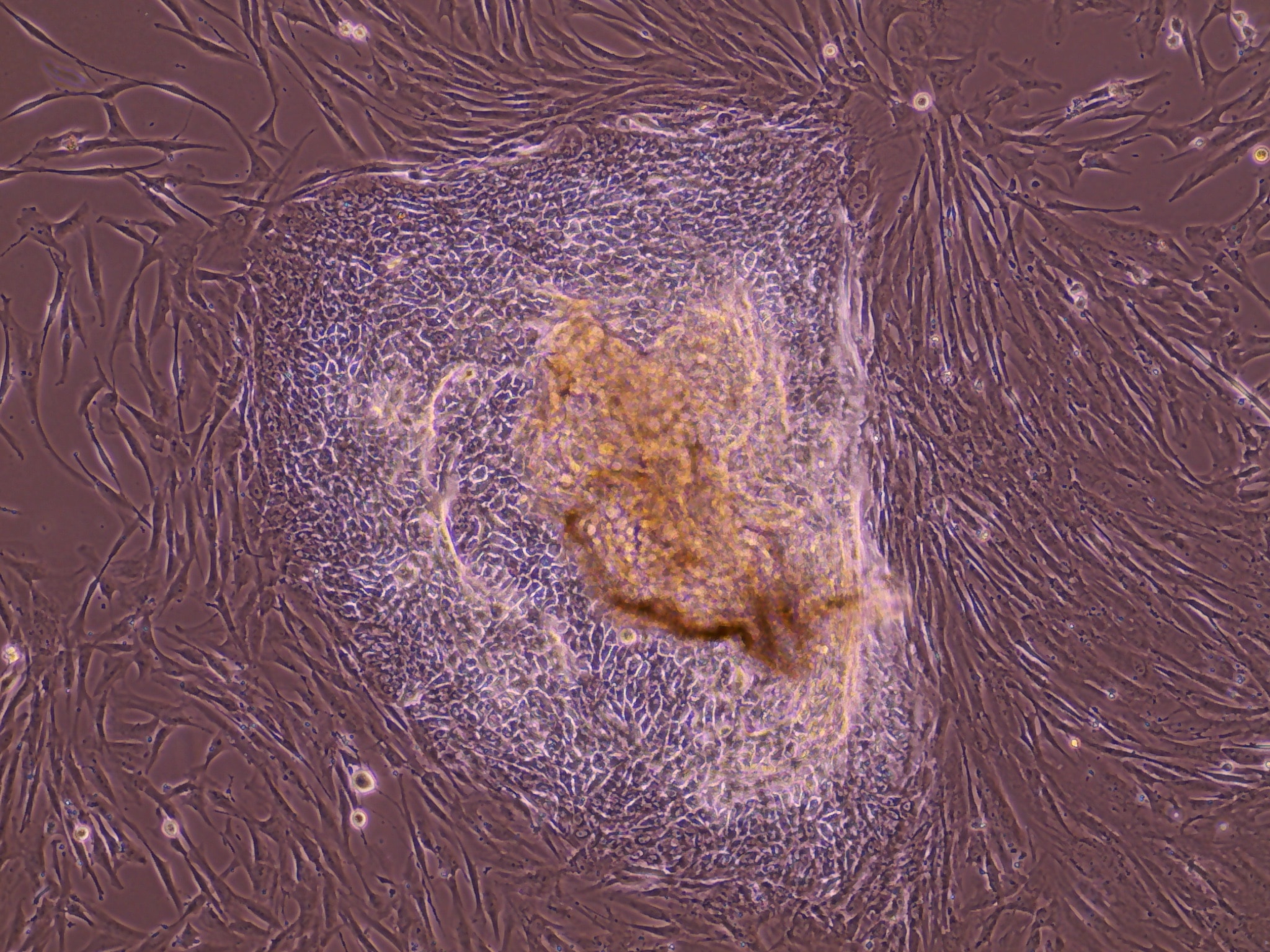Cultrex Reduced Growth Factor Basement Membrane Extract, Type 2, Select
Try it on your cultures! Request a Sample of Cultrex RGF BME, Type 2, Select
Cultrex Reduced Growth Factor Basement Membrane Extract, Type 2, Select Summary
Cultrex Reduced Growth Factor Basement Membrane Extract (RGF BME ),Type 2 Select is specifically qualified to support the establishment and expansion of robust organoid cultures. It's composition mimics the in vivo microenvironment to improve take rate and growth of organoids.Key Benefits
• Qualified for use in organoid cell culture
• Commonly used robust and established organoid systems
• Reduced growth factor formulation provides a more defined culture system
• Quality controlled for performance consistency
Why Use Cultrex RGF BME, Type 2 Select?
Cultrex Reduced Growth Factor Basement Membrane Extract (RGF BME), Type 2 Select is a soluble form of basement membrane purified from Engelbreth-Holm-Swarm (EHS) tumor. This extract provides a natural extracellular matrix hydrogel that polymerizes at 37°C to form a reconstituted basement membrane. Basement membranes are continuous sheets of specialized extracellular matrix that form an interface between endothelial, epithelial, muscle, or neuronal cells and their adjacent stroma and that play an essential role in tissue organization by influencing cell adhesion, migration, proliferation, and differentiation. The major components of BME include laminin, collagen IV, entactin, and heparan sulfate proteoglycans. Negative for the presence of bacteria and fungi.
Cultrex RGF BME, Type 2 provides a proprietary formulation that is high in tensile strength and is designed for use in robust tissue organoid culture as well as other applications requiring an extracellular matrix scaffold.
Protocols Utilizing Cultrex RGF BME, Type 2 Select for Organoid Cell Culture.
Cultrex RGF BME, Type 2 Select is ideal for use as a scaffold for organoid and 3D cell culture. Listed below are protocols designed by our research and development groups for organoid culture featuring Cultrex RGF BME, Type 2 as well as growth factors, media supplements, and small molecules from Bio-Techne.
Video of Cultrex BME Best Practices and Protocols.
Protocol for Mouse Enteric Organoid Culture.
Protocol for Human Gastric Organoid Culture.
Protocol for Human Liver Organoid Culture.
Protocol for Human Lung Organoid Culture.
Protocol for Human Intestinal Organoid Culture.
Protocol for Harvesting Organoids for Biochemical Analysis.
Specifications
Gelling Assay - Cultrex RGF BME, Type 2 gels in less than 30 minutes at 37 °C, and maintains the gelled form in culture medium for a minimum of 7 days at 37 °C.
Dome Assay Cultrex RGF BME, Type 2 forms and maintains stable 3-D dome structures on cell culture plates.
Tube Formation Assay - Cultrex RGF BME, Type 2 supports formation of capillary-like structures by human (HBMVEC; HUVEC) or mouse (SVEC4-10) endothelial cells.
Limitations
For research use only. Not for diagnostic use.
Product Datasheets
Scientific Data
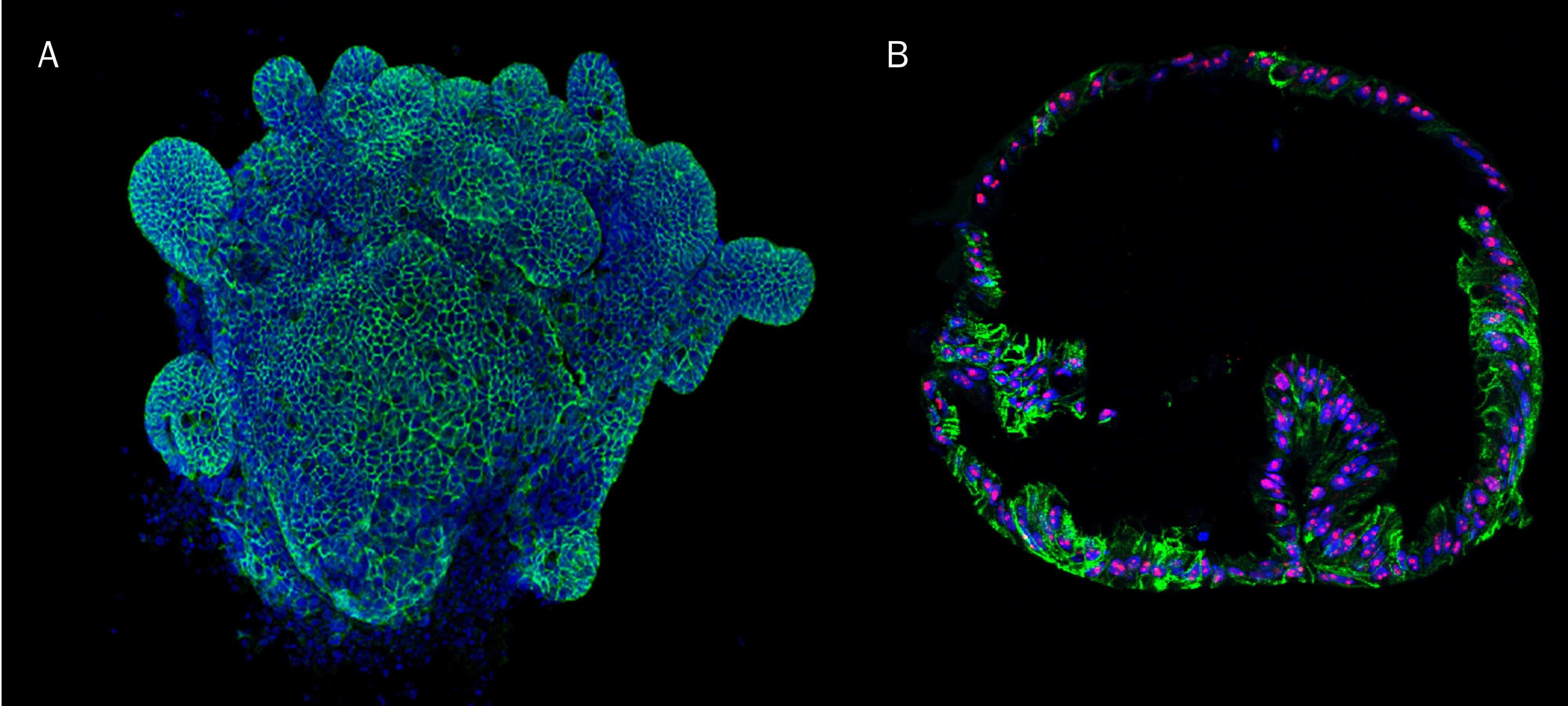 View Larger
View Larger
Mouse Intestinal Organoids Cultured in Cultrex RGF BME, Type 2. Mouse intestinal organoids cultured in Cultrex RGF BME, Type 2 were immersion fixed and processed for whole mount staining or paraffin embedding and sectioning for immunocytochemistry. A) Whole mount mouse intestinal organoids were stained using Goat Anti-Human/Mouse E-Cadherin Antigen Affinity-purified Polyclonal Antibody (green; Catalog # AF748) at 10 µg/mL for 3 hours at room temperature. Cells were counterstained with DAPI (blue). B) Paraffin-embedded mouse intestinal tissue stained for Human Cadherin‑17 Antibody (green; Catalog # MAB1032), Human Ki67/MKI67 Antibody (red; Catalog # AF7617), and counterstained with DAPI (blue).
 View Larger
View Larger
Human Lung Organoids Cultured in Cultrex RGF BME, Type 2. A) Representative brightfield image of human lung organoids cultured using Cultrex RGF BME, Type 2. B) Expression of Sox2 (green; Catalog # AF2018) and Acetylated Tubulin (red; Novus Biologicals, Catalog # NB600-567). C) Expression of p63/TP73L (green; Catalog # AF1916) and Cytokeratin 10 (red; Novus Biologicals, Catalog # NBP2-61736). D) Expression of Podoplanin (green; Catalog # AF3670) as a marker of type 1 alveolar cells.
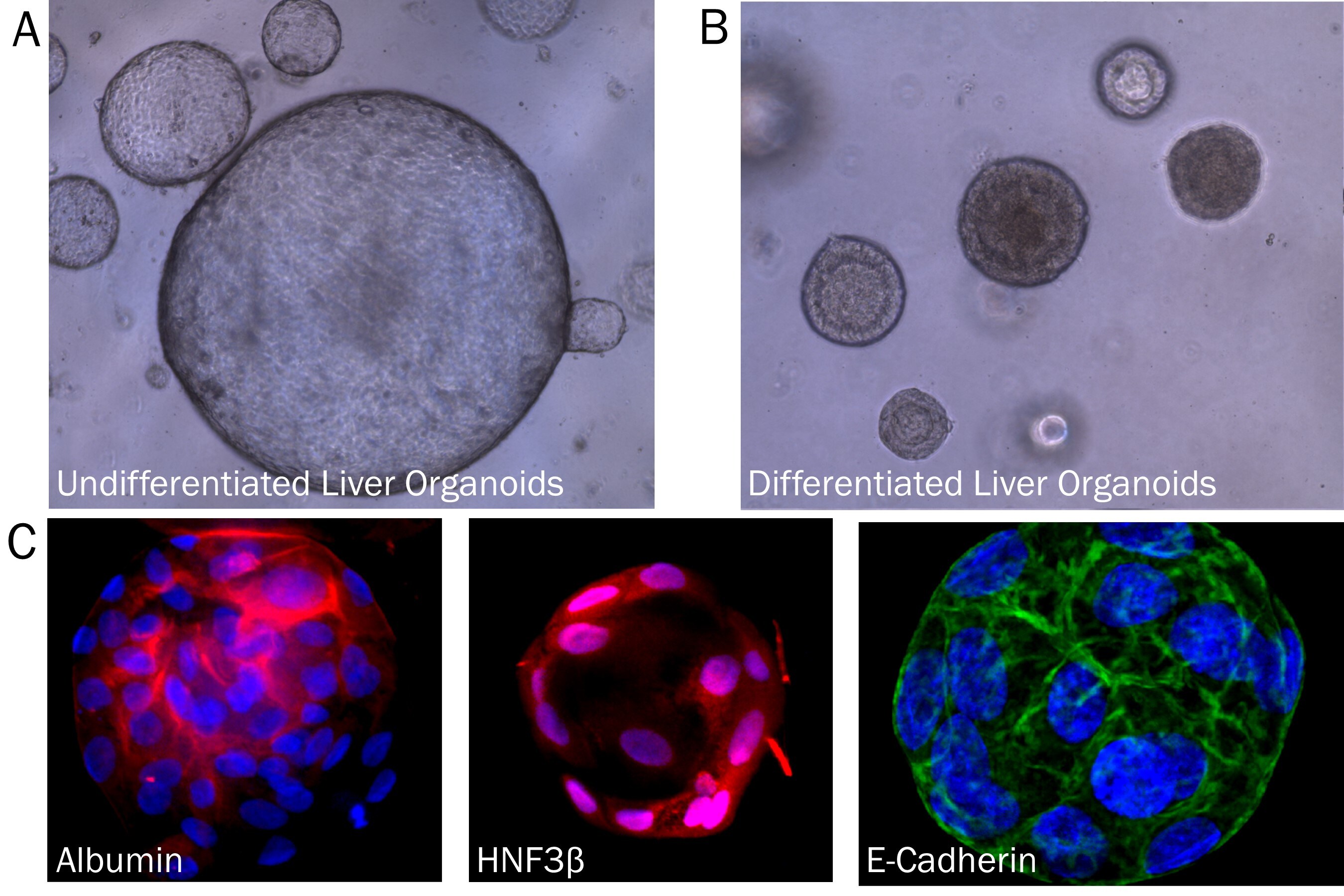 View Larger
View Larger
Liver Organoid Formation and Differentiation in Cultrex RGF BME, Type 2. Human Liver organoids were derived from human biopsy tissue. Undifferentiated organoids were formed by embedding dissociated tissue in Cultrex RGF BME, Type 2 and culturing in specialized media. The organoids were differentiated using media containing Recombinant Human FGF-19 (Catalog # 969-FG), DAPT (Catalog # 2634), and Dexamethasone (Catalog # 1126). A) Undifferentiated liver organoids. B) Liver organoids shrink as they differentiate. C) Representative images of differentiated liver organoids expression hepatocyte markers, Albumin and HNF3 beta, as well as E-Cadherin.
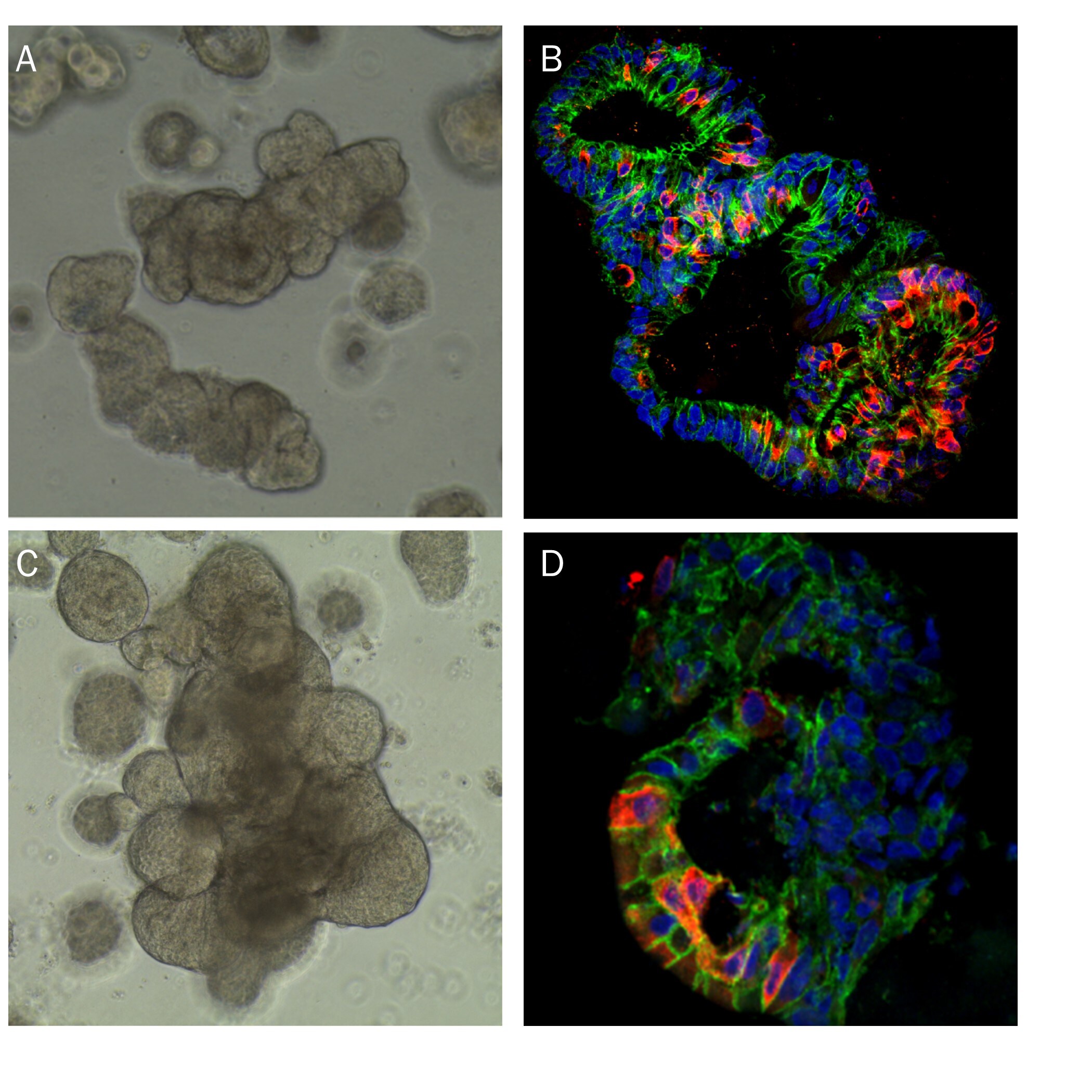 View Larger
View Larger
Human Intestinal Organoids Cultured using Cultrex RGF BME, Type 2. Human transverse colon organoids (A,B) and human ileum organoids (C, D) were grown using cells isolated from transverse colon and ileum biopsy tissue, respectively. Organoids were embedded in Cultrex RGF BME, Type 2 as a scaffold matrix. A) Brightfield image of human transverse organoids. B) Human transverse organoid stained using Goat Anti-Human/Mouse E-Cadherin Antigen Affinity-purified Polyclonal Antibody (green; Catalog # AF748), a MUC2 Antibody (red; Catalog # NBP2-44431), and DAPI (blue). C) Brightfield image of human ileum organoids. D) Human ileum organoid stained using a Aldolase B Antibody (red; Catalog # NBP2-15345), a Human Cadherin-17 Antibody (green; Catalog # MAB1032, and DAPI (blue).
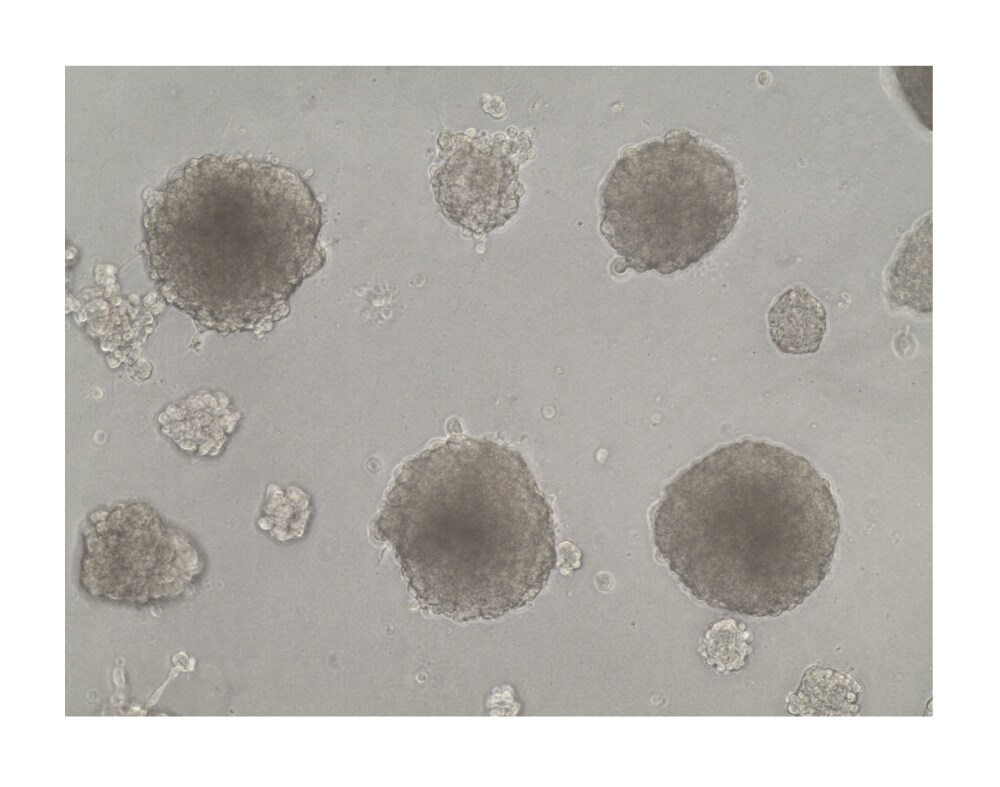 View Larger
View Larger
Formation of HepG2 Spheroids in Cultrex RGF BME, Type 2. Hepatocyte spheroids were formed by plating HepG2 liver hepatocellular carcinoma cells (10,000 cells per well) in a 24-well plate coated with 5 mg/mL of Cultrex RGF BME, Type 2. Spheroids were cultured for 21 days prior imaging by brightfield microscopy.
FAQs
No product specific FAQs exist for this product, however you may
View all FAQsReviews for Cultrex Reduced Growth Factor Basement Membrane Extract, Type 2, Select
Average Rating: 5 (Based on 4 Reviews)
Have you used Cultrex Reduced Growth Factor Basement Membrane Extract, Type 2, Select?
Submit a review and receive an Amazon gift card.
$25/€18/£15/$25CAN/¥75 Yuan/¥2500 Yen for a review with an image
$10/€7/£6/$10 CAD/¥70 Yuan/¥1110 Yen for a review without an image
Filter by:
Do not put it in room temperature for a long time. Keep it in -20 freezer.
I am a senior Research Fellow at the University of Birmingham and I have been using the Basement Membrane Extract, Type 2 Select for the last two years to successfully derive and expand both normal and tumour organoids from different tissue types such as colon, oesophagus, pancreas, liver, ovary and lung.
It should be dissolved in fridge, and be finished in 2 two weeks after dilution.


